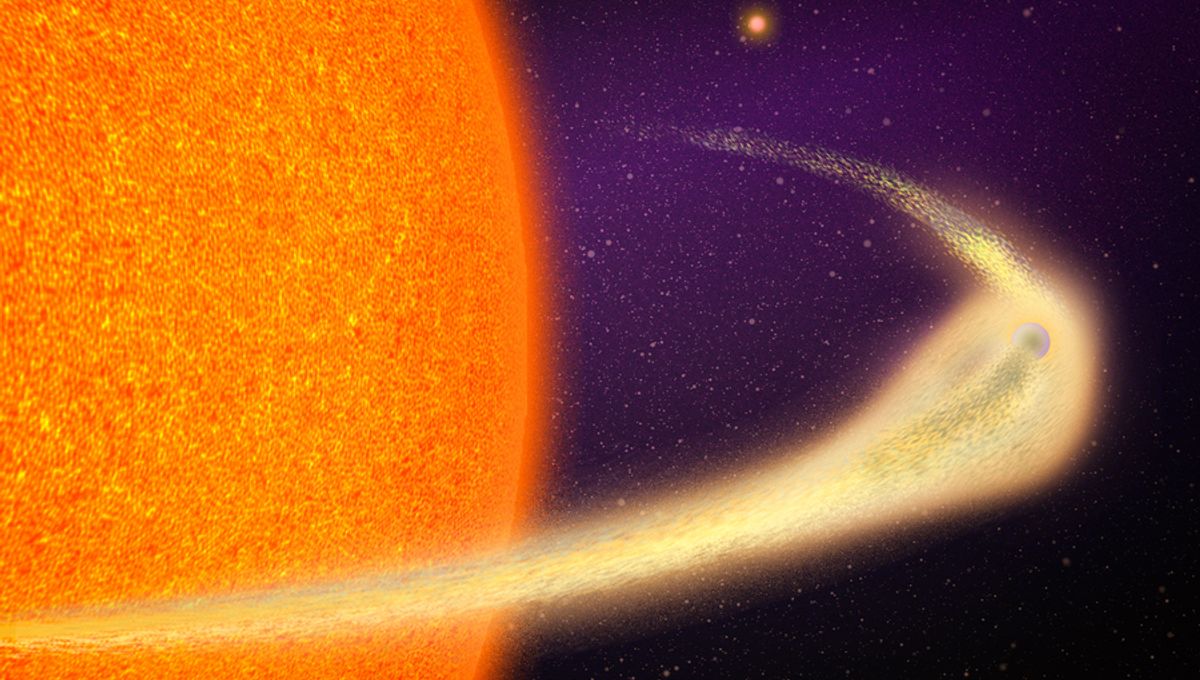
Planet BD+054868Ab is one of only four known disintegrating planets, worlds close enough to their star that they end up being roasted and torn apart. But this little world is unique in the extent of this process; it has the longest tail of any such planet. Yes, these worlds form a comet-like tail of materials evaporating away, and this one is losing the equivalent of Mount Everest to space every single orbit.
The planet orbits its star every 30.5 hours at just 4 percent of the distance between Mercury and the Sun from it. While the star is dimmer, this proximity means that the planet is constantly basking in so much light that it has a temperature of 1,600 °C (almost 3,000 °F). This is enough to melt the planet.
The stellar wind spreads the dust particles ahead and behind the world. Its loss of mass rate is estimated to be 10 Earths per billion years, so the world is expected to currently be not much bigger than the Moon, with roughly the mass of Mercury. Within a couple of million years, it will be gone for good.
“The extent of the tail is gargantuan, stretching up to 9 million kilometers long, or roughly half of the planet’s entire orbit,” lead author Marc Hon, a postdoc in MIT’s Kavli Institute for Astrophysics and Space Research, said in a statement.
The exceptional planet’s nature was discovered thanks to NASA’s Transiting Exoplanet Survey Satellite (TESS). Whenever this world transited in front of its star, it eclipsed a bit of its light. The eclipse showed specific patterns that could only be explained by a planet being boiled apart
“The shape of the transit is typical of a comet with a long tail,” Hon explains. “Except that it’s unlikely that this tail contains volatile gases and ice as expected from a real comet — these would not survive long at such close proximity to the host star. Mineral grains evaporated from the planetary surface, however, can linger long enough to present such a distinctive tail.”
The tail stretches for 9 million kilometers (5.6 million miles) or about half the orbit of this world. This is much more extreme than any other world that is being destroyed by its own star. Incredibly, the team was not even looking for such a world.
“We got lucky with catching it exactly when it’s really going away,” says Avi Shporer, a collaborator on the discovery who is also at the TESS Science Office. “It’s like on its last breath.”
The study is published in The Astrophysical Journal Letters.
Source Link: Planet Being Boiled Apart Like A Comet Sheds Mount Everest's Worth Of Material Every Orbit